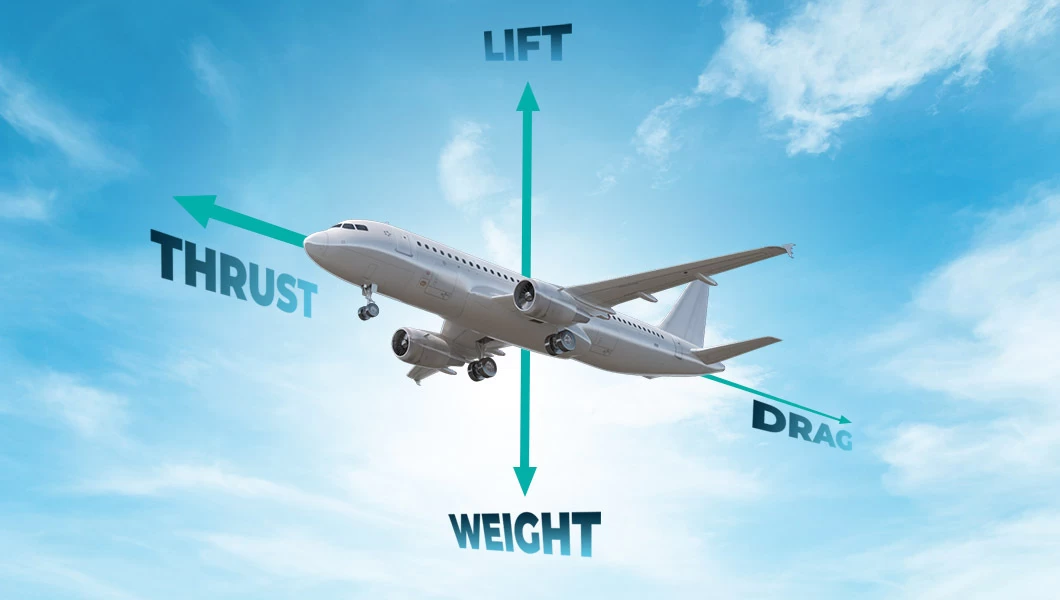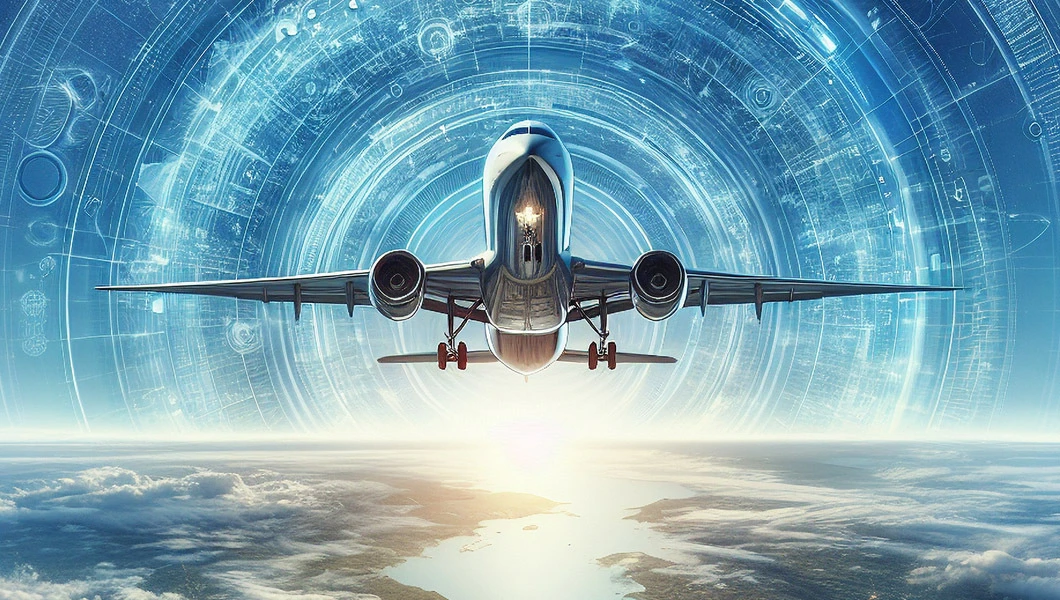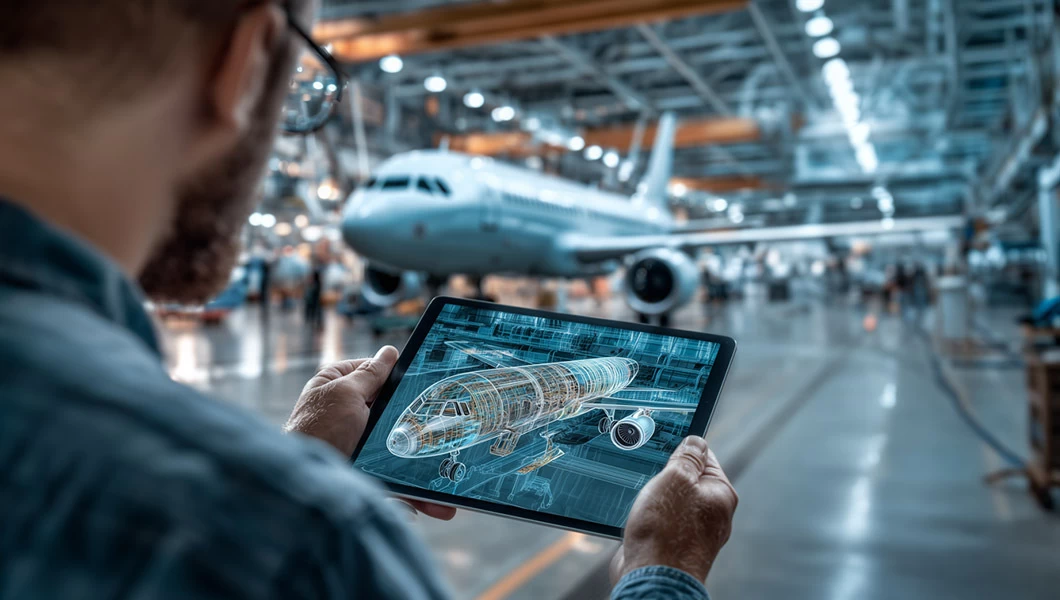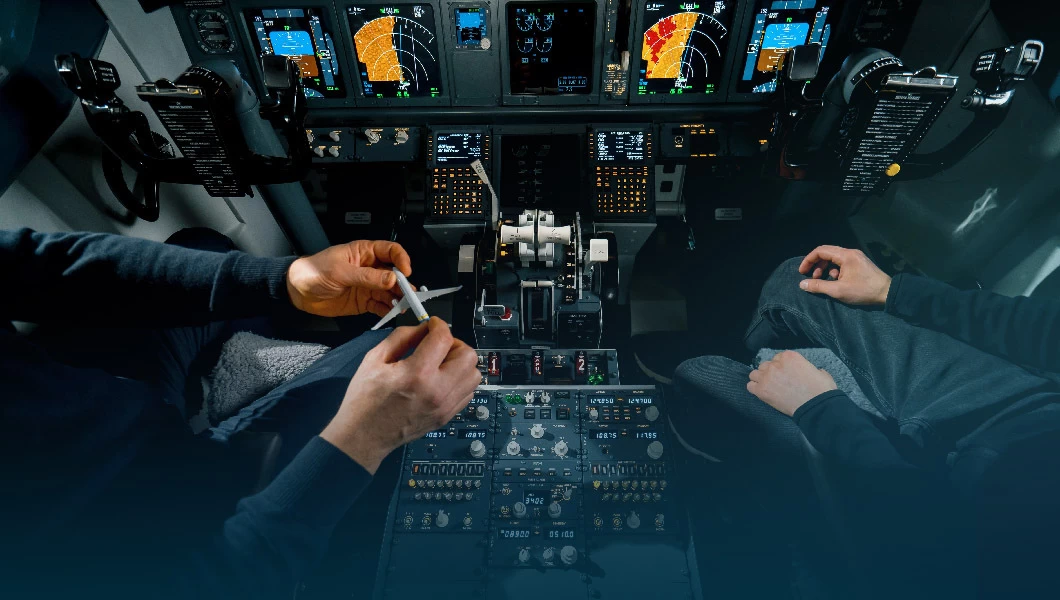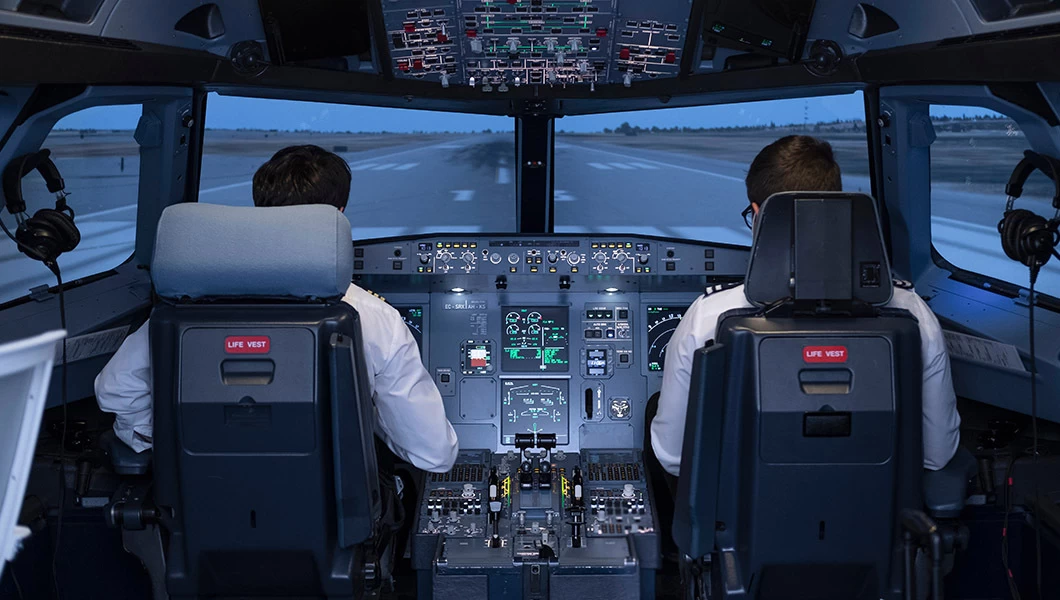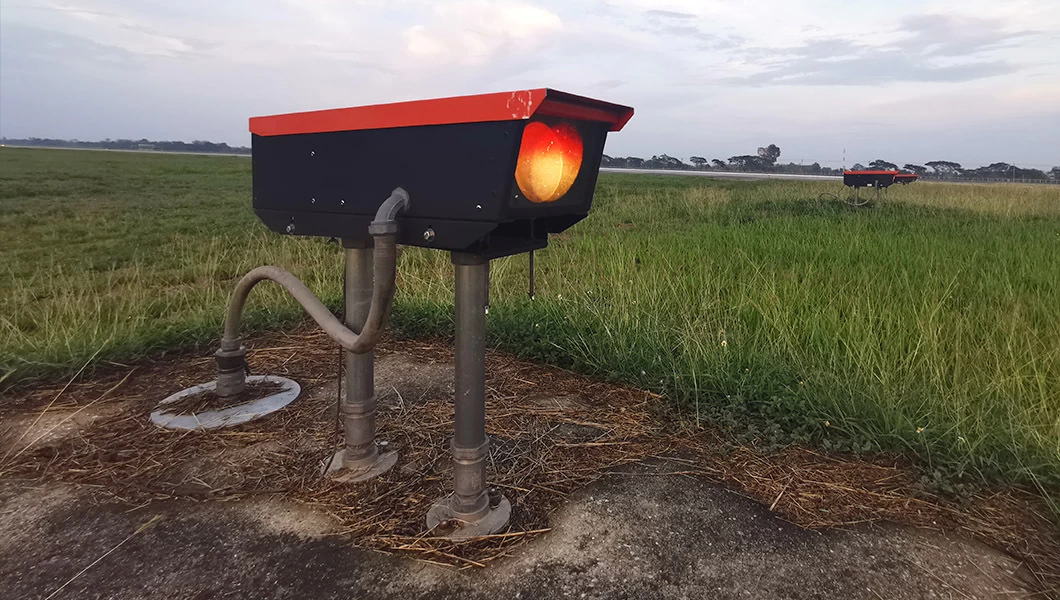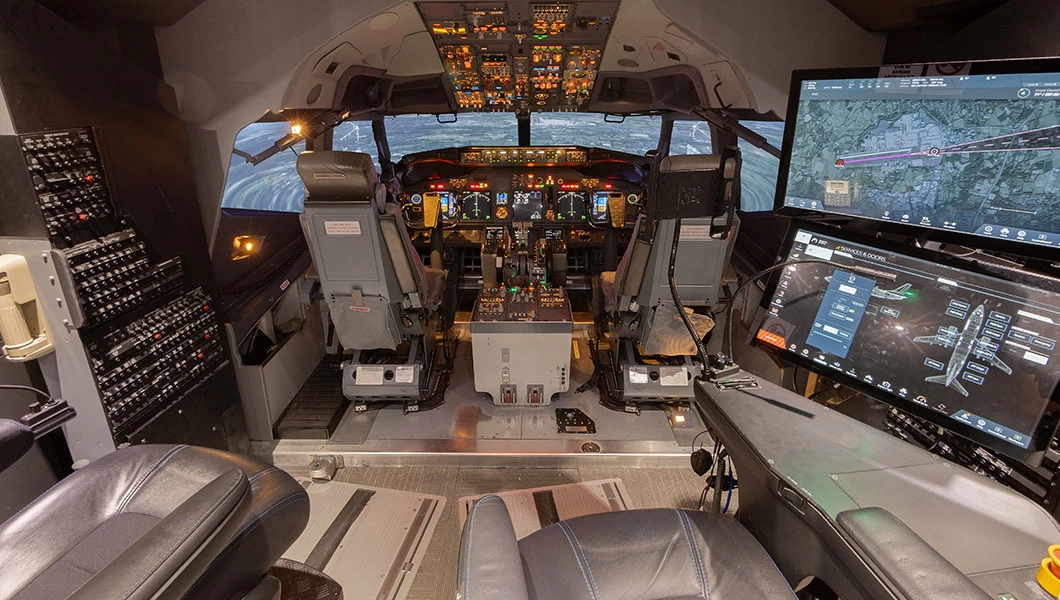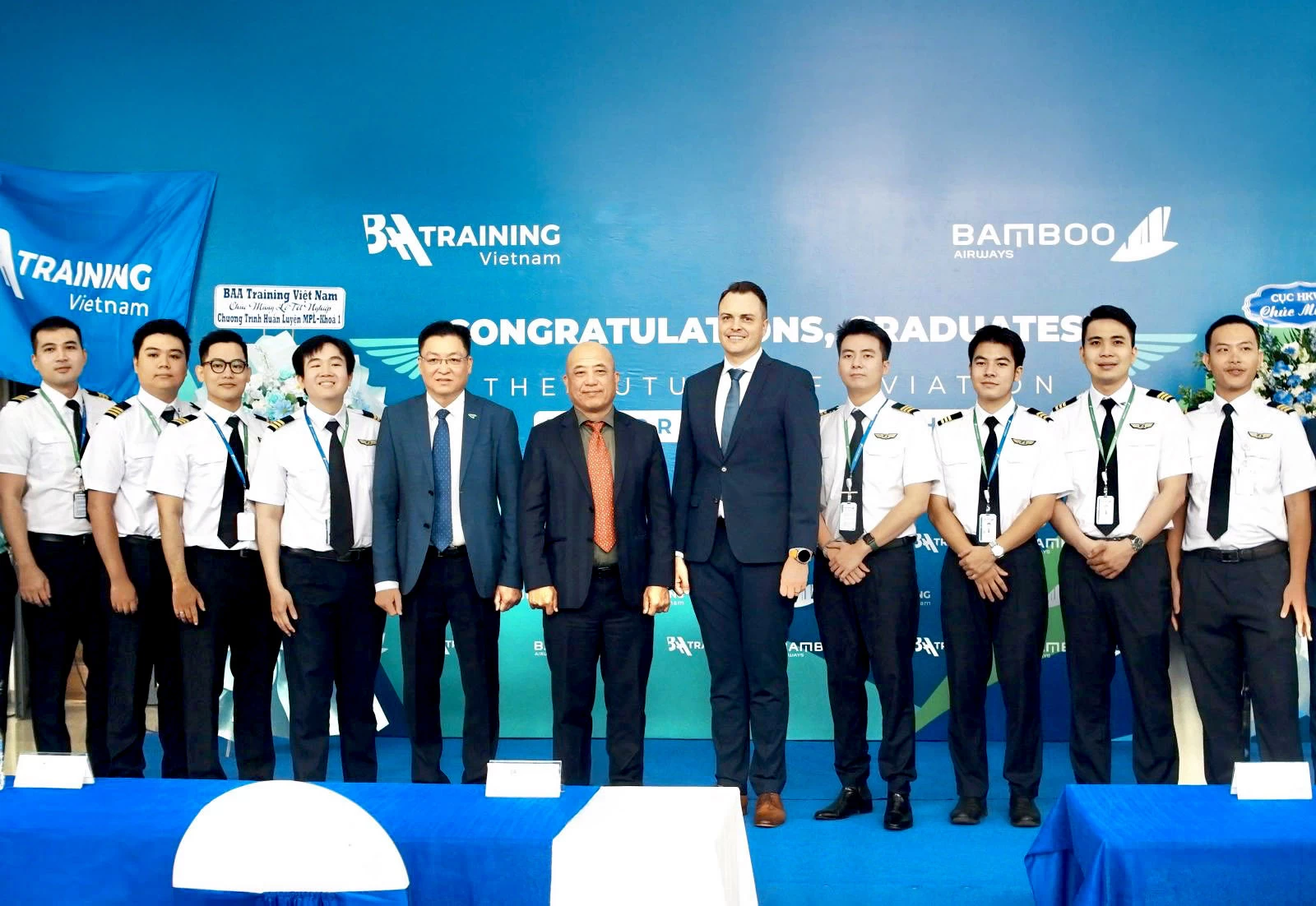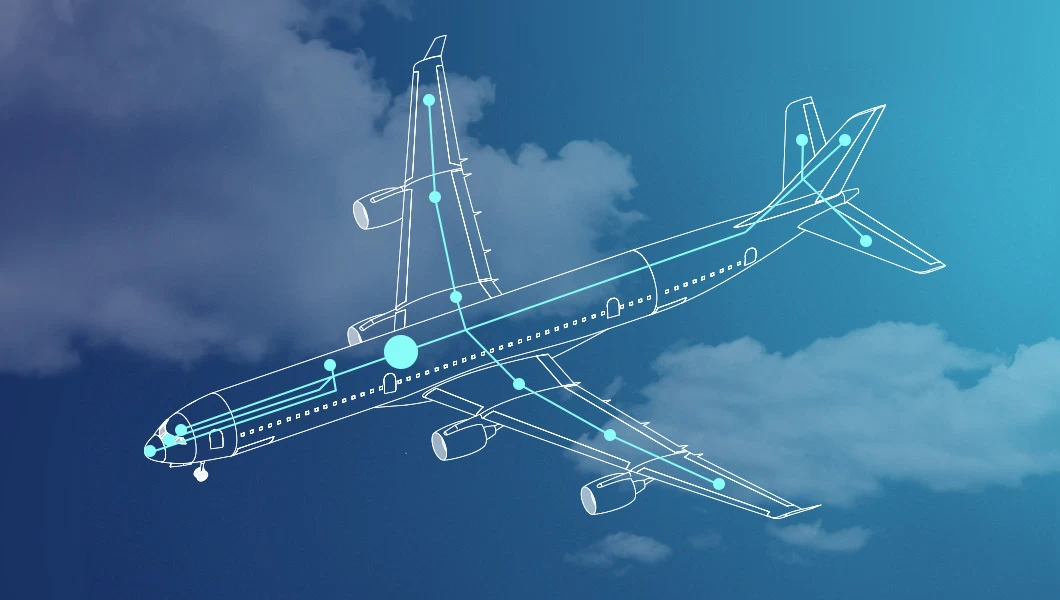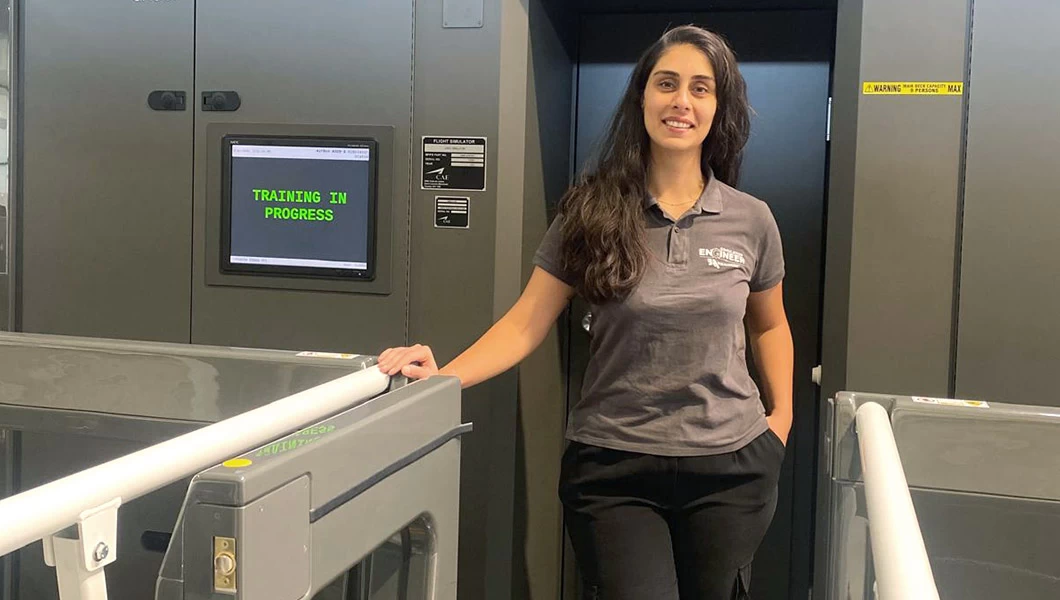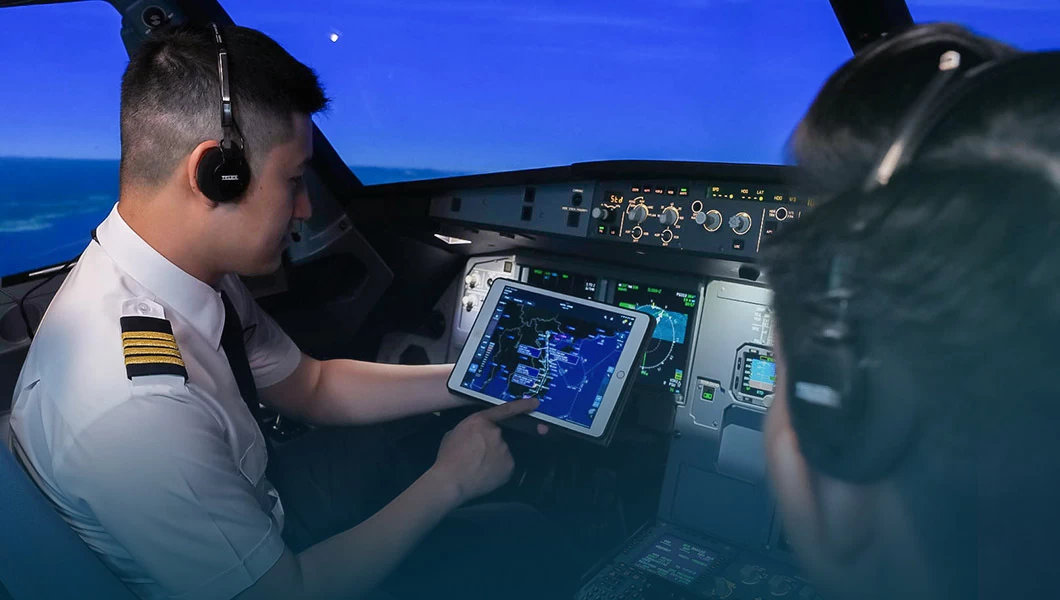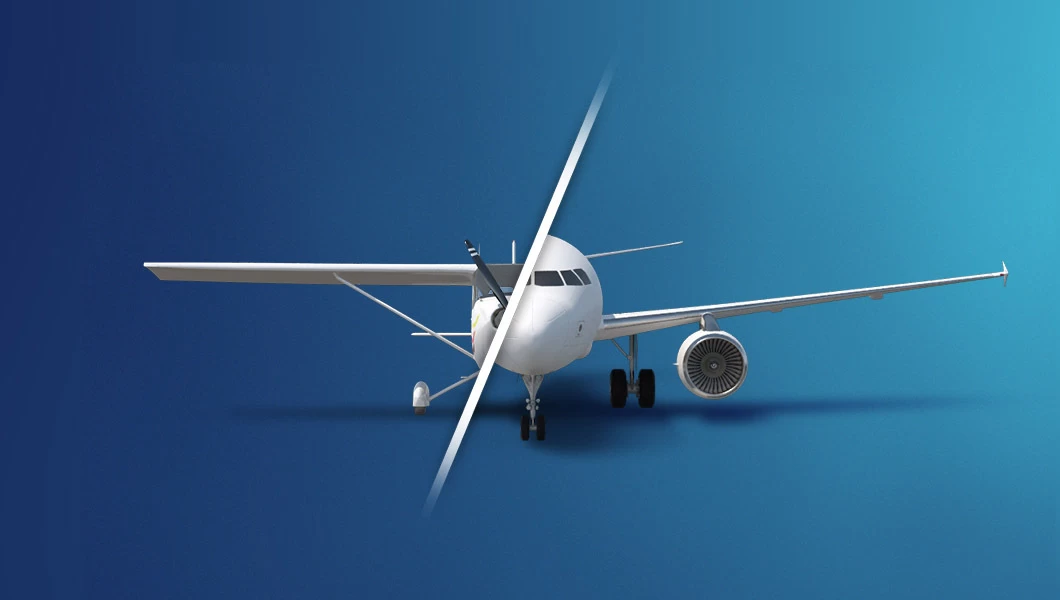Prefer to listen? Press play to hear this article.
So, what makes an airplane fly, then? It all comes down to four invisible forces constantly negotiating midair—lift, weight, thrust, and drag. These aren’t just technical terms from a textbook. They’re the choreographers behind every smooth takeoff, steep climb, and graceful landing. Let’s pull back the curtain on the physics that make flight possible—and yes, a little magical too.
What Is Force?
Before we get into how airplanes stay aloft, let’s talk about forces—not the sci-fi kind, but the everyday kind. A force is any push or pull that gets things moving, slows them down, or changes their direction. You feel it when you shove a heavy suitcase into an overhead bin or when your bag resists being dragged through the terminal.
In aviation, forces shape every second of flight. Whether an aircraft lifts off smoothly or struggles against the wind comes down to how these forces interact—and whether they’re cooperating or clashing.
How Do Airplanes Stay in the Sky?
So, now that we’ve met the four forces, how do they all come together to make an airplane fly? Think of it like a very precise game of tug-of-war—except it’s happening in all directions at once.
Lift pulls the airplane up, weight pulls it down, thrust moves it forward, and drag resists that forward motion. For an airplane to take off, the engines (or propellers) need to create enough thrust to overcome drag, and the wings need to generate enough lift to beat gravity at its own game. When these forces are balanced just right, you get stable, controlled flight. Too much drag? The plane slows down. Not enough lift? Gravity wins. But when everything clicks—when thrust overpowers drag and lift overcomes weight—you get the magic moment where metal leaves the Earth and becomes airborne.
The Four Forces of Flight
At the core of aerodynamics are the four forces that act on an aircraft: lift, weight, thrust, and drag. These forces are in constant interaction, and understanding them is key to flying.
Lift
Lift is the upward force generated by an aircraft’s wings. It acts perpendicular to the relative wind and opposes weight. But to really understand lift, we need to first talk about air.
Air may be invisible, but it’s made up of molecules that have mass. That mass means air has weight, and because of that, it applies force. The shape of the wing, known as an airfoil, plays a crucial role in creating this lift.
Enter: Bernoulli’s Principle. This scientific concept states that faster-moving air has lower pressure, and slower-moving air has higher pressure. The curved upper surface of the wing causes air to speed up as it flows over the top, creating lower pressure above the wing than below it. This pressure difference is what lifts the airplane into the sky.
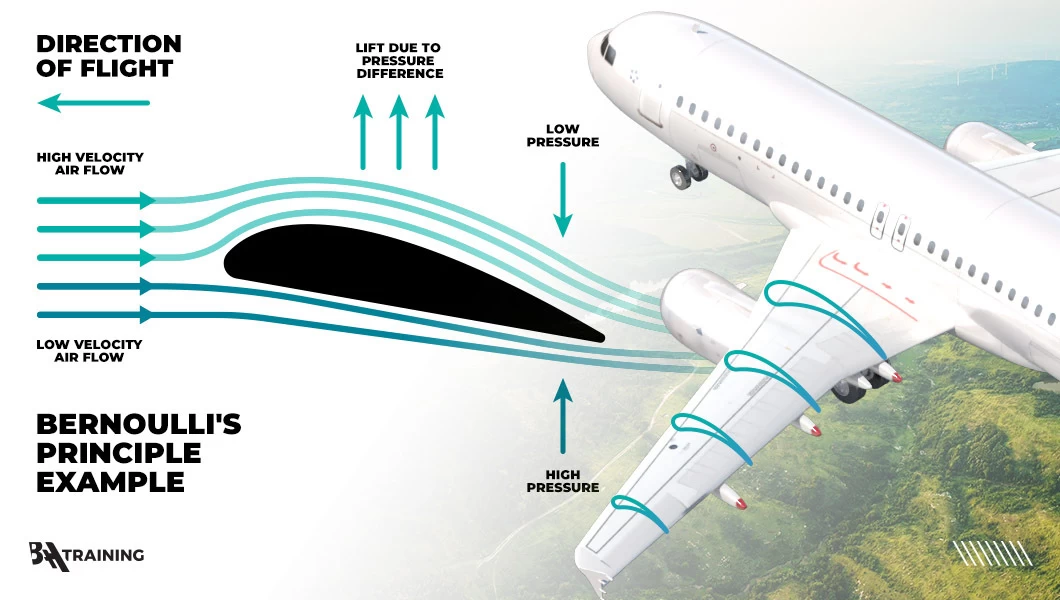
You can try this with a simple experiment: take a strip of paper and blow over the top of it. The paper lifts—that’s Bernoulli in action.
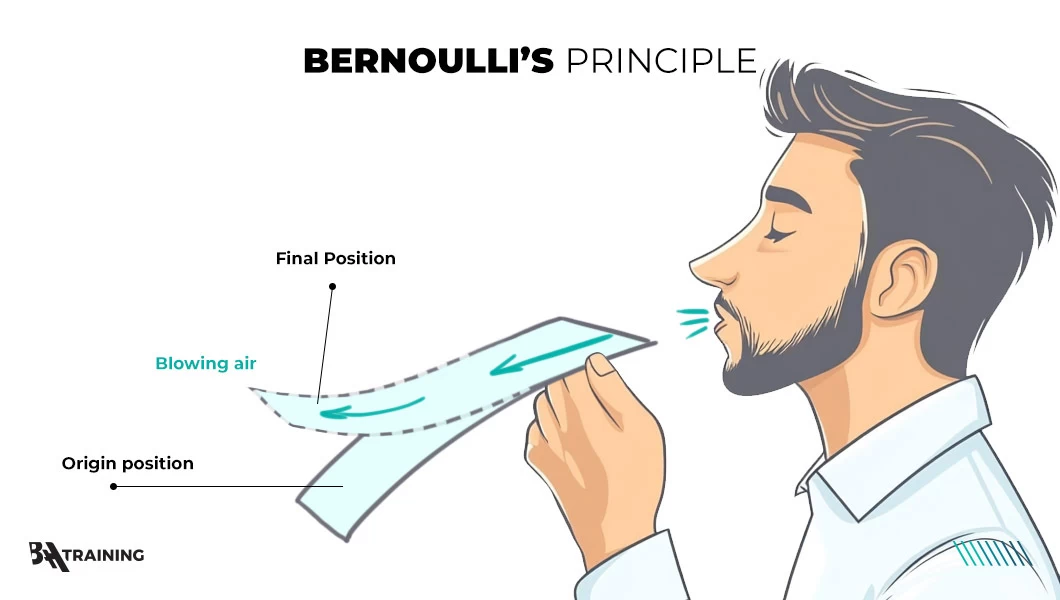
Pilots also control lift by adjusting the angle of attack (AoA) and airspeed. More angle, more lift—up to a point. Beyond that, the airflow breaks down and the wing stalls (we’ll cover that below). Air density also matters; high altitudes and hot or humid conditions thin the air, which affects how much lift is generated.
Weight
Weight is the force of gravity pulling the aircraft toward the Earth. It acts through the center of gravity (CG)—a crucial point that affects balance and stability.
Similar ARTICLES
Managing weight is equally about how much you’re carrying and how it’s distributed. For instance, the position of the CG changes as fuel is consumed. On short flights, this shift is minimal. But on long-haul operations, an out-of-balance CG can affect handling, increase fuel consumption, or even lead to unsafe conditions.
Thrust
Thrust is what propels the airplane forward and is produced by the engines. Without it, there’s no movement—no air over the wings—no lift.
There are different types of engines, but most commonly, jet engines and propellers generate thrust in aircraft. Propeller-powered planes like Cessna, Diamond, Piper, and Cirrus are widely used in initial pilot flight training. These propellers act like spinning wings, using airfoil shapes to create thrust by accelerating air backwards.
Jet engines produce thrust by rapidly expelling exhaust gases. They’re efficient at higher speeds and altitudes but come with their own quirks—for instance, a slight delay when pilots adjust throttle settings. To help with this, many jets have different idle thrust settings on the ground versus in the air to reduce reaction times.
Managing thrust is essential across all phases of flight—from rapid acceleration during takeoff to precision control during cruise and landing.
Drag
Drag is the aerodynamic force that resists forward motion. It works opposite to thrust and comes in two main forms:
Your PILOT CAREER
starts with a first click
- Parasitic drag: Includes form drag, skin friction, and interference drag.
- Induced drag: A byproduct of generating lift.
Pilots and engineers constantly work to reduce drag through aerodynamic design—smooth surfaces, streamlined shapes, and features like winglets. But drag isn’t always the enemy. During landing, it’s a helpful force that slows the aircraft down. Spoilers and air brakes are designed to increase drag when needed, making descent and landing safer and more controlled.
Beyond the Basics
The Boundary Layer and Flow Types
The boundary layer is the thin layer of air close to the aircraft’s surface where friction effects are strongest. Within this layer, airflow can be:
- Laminar: Smooth and consistent, generating less drag but more prone to separation.
- Turbulent: Chaotic and mixed, causing more drag but staying attached to surfaces longer.
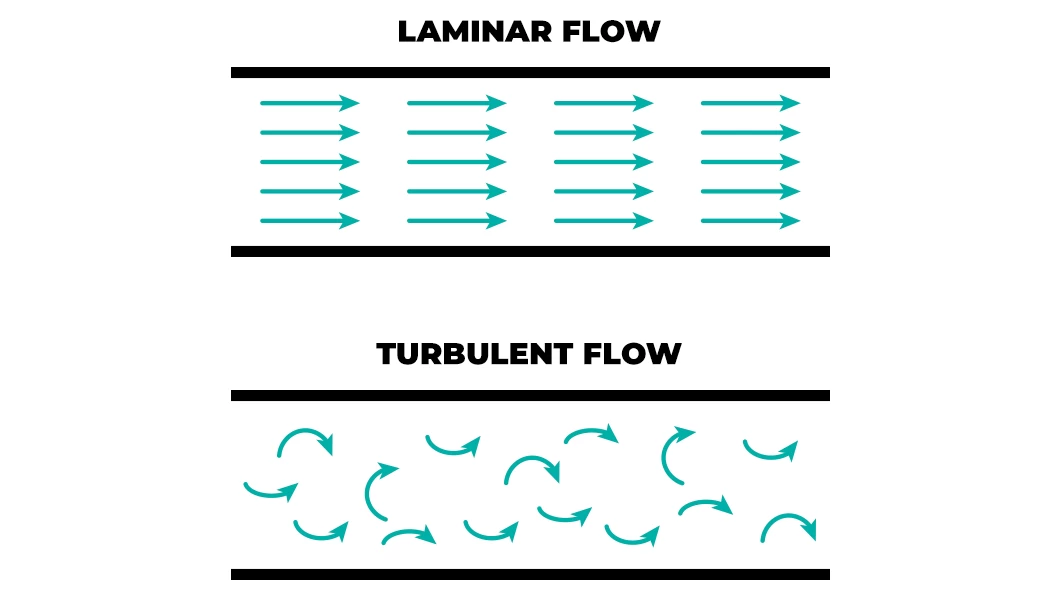
Pilots may not be aerodynamics engineers, but being aware of these differences helps. Maintaining laminar flow when possible reduces drag, but turbulence can sometimes be beneficial—especially to delay a stall by keeping air attached to the wing longer.
Advanced aircraft have systems to manipulate airflow and monitor boundary layer behavior, but at its core, it’s all about managing the relationship between air, surface, and speed.
Angle of Attack and Stall
The angle of attack (AoA) is the angle between the wing’s chord line and the relative wind. Increasing AoA increases lift—up to a critical point. Beyond that point, the smooth airflow detaches from the wing’s upper surface, and the wing stalls.
Stalls can happen at any airspeed or altitude if the critical AoA is exceeded. This is why modern aircraft often have AoA indicators and audible stall warnings. Pilots must monitor and manage AoA carefully, especially during slower flight, steep turns, or landing approaches.
Bottom Line
Airplanes don’t fly because of luck or mystery—they fly because four invisible forces are constantly working together in careful balance. Lift, weight, thrust, and drag may be pushing and pulling in different directions, but when they hit just the right harmony, flight happens. It’s science, yes—but it still feels a little like magic every time wheels leave the runway.
